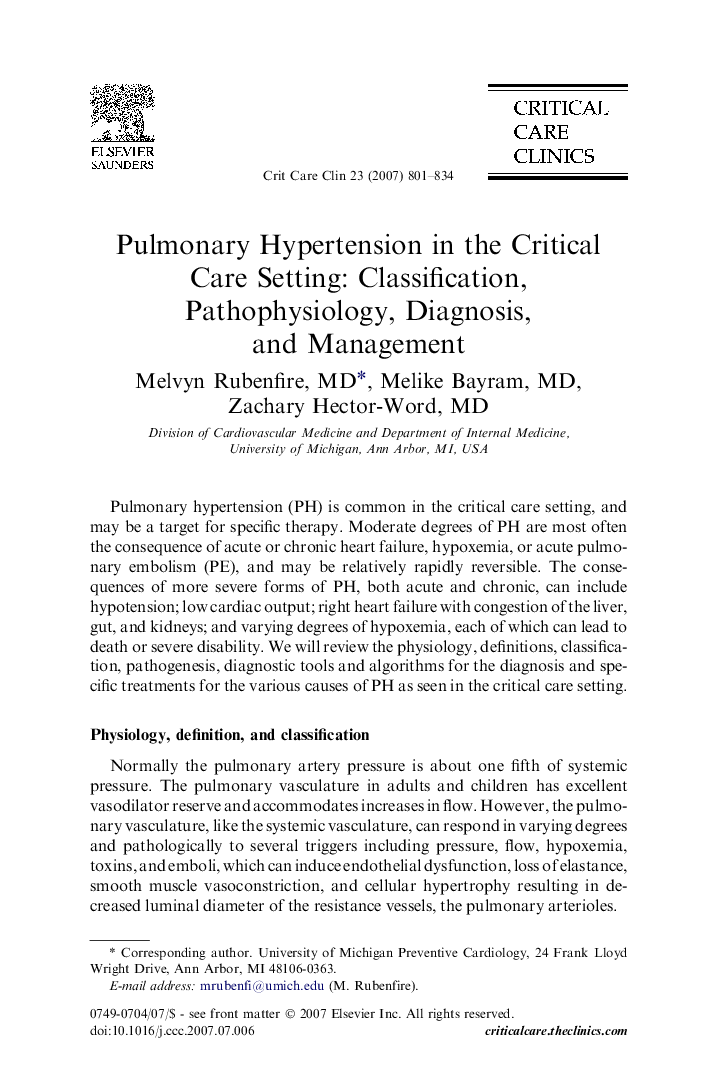| Article ID | Journal | Published Year | Pages | File Type |
|---|---|---|---|---|
| 3108852 | Critical Care Clinics | 2007 | 34 Pages |
Pulmonary hypertension (PH) is common in the critical care setting, and may be a target for specific therapy. Moderate degrees of pulmonary hypertension are most often the consequence of acute or chronic heart failure, hypoxemia, or acute pulmonary embolism, and may be relatively rapidly reversible. The consequences of more severe forms of PH, both acute and chronic, can include hypotension; low cardiac output; right heart failure with congestion of the liver, gut, and kidneys; and varying degrees of hypoxemia, each of which can lead to death or severe disability. We review the physiology, definitions, classification, pathogenesis, diagnostic tools, and algorithms for diagnosis and specific treatments for the various causes of PH as seen in the critical care setting.
